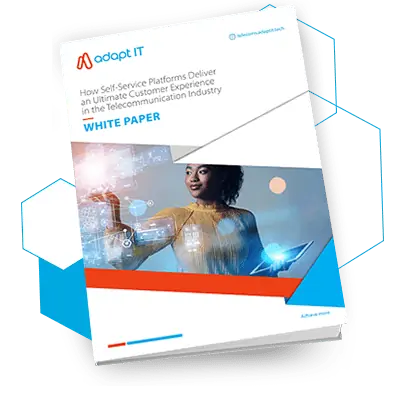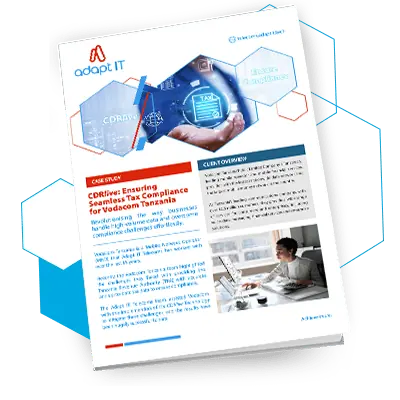Avec l'impact de la Transformation Numérique sur tous les aspects des entreprises de nos jours, le Big Data et sa valeur pour fournir des informations précieuses et exploitables ne peuvent être sous-estimés. Le dicton selon lequel « les données font tourner le monde » est vrai. Toutefois, pour que les entreprises en tirent réellement profit, les processus d'Extraction, de Transformation et de Chargement (ETL) doivent être précis, exacts, pertinents en plus d'englober toutes les informations essentielles. Ce processus de traitement des données est fondamental et vital pour obtenir des analyses avancées qui améliorent les opérations et les décisions de l'entreprise.
Table des matières
ToggleIl est important de noter que toutes les méthodes de traitement des données ne sont pas équitables. Se contenter d'introduire des données dans un système de traitement standard sans tenir compte du processus d'Extraction, de Transformation et de Chargement (ETL) ne permettra pas d'obtenir des informations précises et de convertir des données complexes en informations significatives et pratiques. Il est essentiel de veiller à ce que votre solution d'analyse avancée suive les étapes appropriées et adhère aux meilleures pratiques. Cet article explore en profondeur ces aspects.

Que signifie le Traitement des Données (Data Processing) ?
Le Traitement des Données (Data processing) implique la collecte des données brutes et leur conversion en informations précieuses et compréhensibles. Le traitement des données comporte deux étapes clés. La première étape est appelée ETL (Extract, Transform, and Load), qui consiste à extraire les données, à les transformer et à les charger dans une base de données. La deuxième étape est celle de l'analyse avancée, qui consiste à analyser les données et à en tirer des enseignements. Dans le passé, ces étapes étaient généralement réalisées par des data scientists ou des analystes. Toutefois, grâce aux récentes avancées technologiques, telles que l'apprentissage automatique et l'intelligence artificielle, ces processus peuvent désormais être gérés de manière plus efficace et efficiente.
Comprendre le fonctionnement du processus ETL dans l'Analyse Avancée
Le traitement des données est un cycle et un processus qui se divise en trois phases, souvent appelées Extraction, Transformation et Chargement (ETL)
- Extraction - Au cours de la phase d'extraction du traitement des données, les données brutes générées et collectées par le réseau sont extraites et transmises au fournisseur de services pour être utilisées à des fins de traitement et d'analyse. Cette collecte de données comprend les données transactionnelles du réseau, notamment la voix, l'utilisation des données, les SMS et les enregistrements détaillés des appels en itinérance (CDR), ainsi que les données de référence hors réseau liées à l'OCS (systèmes de facturation en ligne) à la recharge, à la facturation, à la CRM (Gestion de la relation client)aux informations sur l'appareil, etc.
- Transformer - Au cours de la phase de transformation du cycle de traitement des données, les données brutes fournies par le réseau sont transformées en données utilisables, précises, vérifiées et pertinentes. Tout d'abord, les données binaires (générées par une machine) sont converties en texte lisible. Pendant cette phase, les métadonnées sont ajoutées au flux et des recherches de normalisation et de portabilité des numéros sont effectuées pour améliorer l'utilisation et la précision des données. Cette étape, souvent appelée "nettoyage des données", implique la vérification des données. Il s'agit du processus de tri et de filtrage des données brutes pour n'inclure que les données nécessaires et de qualité. Les données brutes sont ensuite analysées et vérifiées pour détecter les erreurs, les doublons, les mauvais calculs, etc. Il s'agit d'une étape importante, car ces ensembles de données peuvent produire des résultats trompeurs s'ils ne sont pas préparés et filtrés correctement.
- Chargement - Au cours de la phase de chargement de ce processus, les données qui ont été extraites et transformées sont ensuite chargées dans un entrepôt de données détaillé ou dans un lac de données (big data lake).
Le processus ETL constitue l'épine dorsale de toutes les analyses et perspectives, car il donne aux données une forme et un contexte. Ce processus garantit l'exactitude et la qualité des données. Le traitement des données ne s'arrête pas à l'ETL. Nous examinons ci-dessous le processus d'accès aux analyses avancées après le processus ETL.
De l'ETL à l'Analyse Avancée
Vous vous demandez peut-être ce qui se passe après le processus ETL et comment parvenir à l'obtention d'analyses avancées précieuses et pertinentes ? Ceci est lié aux deux étapes finales du cycle de traitement des données, qui incluent
- Agrégation des données - Au cours de cette étape du cycle, les données brutes sont soumises à diverses manipulations techniques, résumés et modèles de données qui utilisent l'apprentissage automatique et les algorithmes artificiels pour générer un résultat ou une interprétation des données. Cette étape peut souvent varier en fonction de la source des données traitées, comme les lacs de données, les bases de données en ligne, un entrepôt de données, les appareils connectés, etc. et de l'utilisation prévue du résultat.
- Sortie, Visualisation et Interprétation des Données - À ce stade, les différents types de données sont transmis et affichés dans un format lisible, notamment sous la forme de tableaux de bord, de rapports, de graphiques, de tableaux, de vidéos, de documents, etc. Cette étape de visualisation des données mettra en évidence les informations significatives et exploitables recueillies à partir des données sous la forme d'analyses avancées.
Une fois que chacune de ces étapes est terminée, vous pouvez accéder aux analyses avancées qui vous fournissent des informations précises sur vos processus d'affaires Telco, ainsi que sur les différents indicateurs de performance spécifiques aux Telcos disponibles grâce au processus de modélisation des données. Ces informations vous permettront d'adapter et de personnaliser les solutions liées aux besoins spécifiques des clients et des utilisateurs finaux grâce à la gestion des données. Ces informations permettent également de définir les performances de l'entreprise, de mettre en évidence les possibilités d'amélioration, de faciliter la prise de décisions éclairées et, en fin de compte, d'améliorer le chiffre d'affaires et la rentabilité.
Les Avantages du processus ETL et de l'Analyse Avancée pour les Opérateurs Télécoms
Le processus ETL (Extract, Transform, Load) et l'analyse avancée jouent un rôle crucial dans l'industrie des Télécommunications, offrant une série d'avantages. En voici quelques-uns :
Processus ETL :
- Intégration des données - Les processus ETL permettent aux Opérateurs Télécoms d'intégrer des données provenant de diverses sources, telles que les bases de données clients, les journaux de réseau et les enregistrements d'utilisation des services. Cette intégration fournit une vue unifiée des données, ce qui permet une meilleure prise de décision.
- Amélioration de la qualité des données - Les processus ETL comportent souvent des étapes de nettoyage et de validation des données. Cela permet de s'assurer que les données utilisées pour l'analyse sont exactes et fiables, ce qui améliore la prise de décision et réduit les erreurs.
- Entrepôt de données efficace - Les processus ETL facilitent le transfert des données des systèmes opérationnels vers un entrepôt de données, ce qui facilite la gestion et l'analyse de grands volumes de données. La gouvernance et l'accessibilité des données s'en trouvent améliorées.
- Optimisation des performances - Les processus ETL permettent de transformer et d'optimiser les données pour améliorer les performances des systèmes d'analyse. Ceci est crucial dans le secteur des Télécommunications, où les grands ensembles de données sont courants et où un accès rapide à l'information est essentiel.
- Analyse des données Historiques - Les processus ETL permettent de stocker et d'analyser les données historiques. Ces données sont précieuses pour l'analyse des tendances, l'identification des schémas, la compréhension du comportement des clients à long terme et la planification stratégique.
Analyse Avancée :
- Analyse Prédictive - Les opérateurs de Télécommunications peuvent utiliser l'analyse avancée pour prédire les tendances futures, l'attrition de la clientèle et les performances du réseau. Cela permet de prendre des décisions proactives et de planifier les ressources.
- Segmentation des clients - L'analyse avancée permet de segmenter les clients en fonction de leur comportement, de leurs préférences et de leurs habitudes d'utilisation. Cela permet un marketing ciblé, des services personnalisés et des stratégies de fidélisation de la clientèle.
- Détection de la fraude - Les opérateurs de télécommunications sont confrontés à des défis liés à la fraude. L'analyse avancée permet d'identifier des schémas inhabituels dans les enregistrements d'appels ou l'utilisation, ce qui aide à détecter les activités frauduleuses et à sécuriser le réseau à un stade précoce.
- Optimisation du Réseau - L'analyse peut être utilisée pour optimiser les performances du réseau en analysant les données sur les modèles de trafic, les pics d'utilisation et les goulets d'étranglement du réseau. Cela permet d'améliorer l'efficacité et la qualité du service et de réaliser des économies.
- Efficacité opérationnelle - L'analyse avancée permet d'optimiser divers aspects opérationnels, tels que la gestion des effectifs, l'affectation des ressources et la maintenance des équipements. Il en résulte une amélioration de l'efficacité et une réduction des coûts d'exploitation.
- Conformité réglementaire - L'analyse avancée peut contribuer à assurer la conformité avec les réglementations en matière de Télécommunications en surveillant et en établissant des rapports sur divers paramètres, aidant ainsi les opérateurs de Télécommunications à éviter les problèmes juridiques.
En résumé, le processus ETL et l'analyse avancée font partie intégrante de l'industrie des Télécommunications, car ils permettent de gérer et d'obtenir des informations précieuses à partir de la grande quantité de données de ce secteur. Ces processus améliorent la prise de décision, l'efficacité opérationnelle et la performance globale de l'entreprise.
La solution CDRlive d'Adapt IT Telecoms établit un nouveau standard pour les solutions de traitement des données et d'Analyse Avancée ?
La solution CDRlive de la société Adapt IT Telecoms, se charge de veiller à ce que votre cycle de traitement des données, connu sous le nom d'ETL, soit efficace et précis. Cette technologie extrait les données brutes exactes, provenant du réseau, à partir de sources appropriées et au bon moment. Cela vous donne accès à des informations précieuses sur tous les aspects de votre entreprise. Cette technologie utilise des logiciels et des programmes d'automatisation innovants pour garantir la précision, la rapidité et l'efficacité du cycle ETL et de l'analyse des données.
CDRlive se distingue des autres solutions de l'industrie par plusieurs éléments. Vous connaissez l'adage selon lequel toutes les solutions ne sont pas équivalentes, et c'est le cas de nombreuses solutions d'analyse avancée sur le marché aujourd'hui. Ces solutions se contentent souvent d'extraire des données de diverses sources et de les charger dans un entrepôt de données sans s'assurer de leur exactitude et de leur pertinence. Cela peut nuire à une entreprise, car de nombreux Opérateurs de Télécommunications n'obtiennent pas les informations correctes, pertinentes ou précises dont ils ont besoin.
Les éléments qui rendent CDRlive unique sont:
- Il ne limite pas les types de fichiers qui peuvent être extraits, transformés et chargés.
- Fournit une agrégation presque en temps réel des données et des alertes, vous permettant de savoir s’il y a un problème lié aux appels interrompus, aux forfaits mobile et plus encore.
- Des solutions d'audit et de traçabilité de l'enregistrement qui permettent d'établir des rapports complets et précis sur les données.
- Il est possible de personnaliser les modèles d'analyse, les résumés et les modèles en fonction du cadre défini par l'utilisateur.
- Permet de traiter et d'analyser quotidiennement de grandes quantités de données presque en temps réel. Par exemple, chez l'un de nos plus gros clients, plus de 25 millions d'abonnés sont gérés. Pour charger 1,6 milliard de nouveaux enregistrements par jour, une solution de 117 To est nécessaire. Cette solution particulière prend en charge plus de 3500 utilisateurs professionnels, en maintenant une disponibilité 24/7.
Pour choisir la bonne solution de traitement des données pour votre entreprise, il est essentiel de s'assurer qu'elle s'aligne sur les objectifs de l'entreprise. Lorsque vous recherchez une solution dotée d'un processus ETL complet et adaptée à votre environnement, assurez-vous qu'elle permet les éléments suivants avant son déploiement.
Une solution de traitement des données performante doit vous permettre de :
- Décomposer les silos de données et s'assurer que le processus ETL est complet et holistique.
- Accédez à des analyses pertinentes en temps quasi réel, qui sont très simples à interpréter, améliorant ainsi la disponibilité des informations sur votre société et sur les inefficacités opérationnelles qui affectent les entreprises.
- Implémentez rapidement les KPI indicateurs clés de performance pour la santé des données, la qualité des données et la gestion opérationnelle dans les secteurs verticaux et horizontaux de votre entreprise de Télécommunications
- Améliorez vos capacités de reporting en produisant des rapports sur le cycle de vie de vos clients, l'acquisition et la fidélisation, les dépenses, la rentabilité et d'autres facteurs qui influencent le chiffre d'affaires.
- Découvrez des informations précieuses sur les contributeurs de revenus du réseau, la gestion du désabonnement, les KPI, les dépenses et bien d'autres sujets.
- Établissez un profil à 360 degrés de vos clients, de leurs profils d'utilisateurs et bien plus encore. Disposer de ces données vous aide à mieux cibler vos produits et services
- Obtenir une visibilité opérationnelle des principaux facteurs de croissance, notamment la croissance des abonnés, les revenus et les ratios de rentabilité).
- Tirez le meilleur parti des informations et des connaissances acquises lors du cycle de traitement des données. Créez des stratégies de produits et de services rentables qui répondent aux besoins et aux exigences de vos clients et qui augmentent les marges bénéficiaires.
- Prenez des décisions éclairées en matière de gestion des revenus et des désabonnements en ce qui concerne la tarification, les stratégies de marketing, les innovations en matière de services, etc.
Conclusion
Vous savez déjà que le big data est un atout essentiel pour toute entreprise. De nombreux secteurs utilisent à tort et à travers le terme "Advanced Analytics", mais sa mise en œuvre et son utilisation ne sont pas faciles à comprendre. L'extraction, la transformation et le chargement (ETL) est une étape cruciale du processus de traitement des données si l'on veut que les données soient réellement bénéfiques et significatives. Essentiellement, elle sépare la partie analyse de tout le reste du processus et précède l'analyse proprement dite.
Pour en savoir plus sur la façon dont l'analyse avancée et le traitement des données ont un impact sur les opérateurs télécoms, jetez un coup d'œil à notre CDRen direct Livre blanc. Si vous souhaitez en savoir plus sur l'analyse avancée et le traitement des données, l'un de nos experts sera ravi de répondre à vos questions. Vous pouvez nous contacter dès aujourd'hui.
Explorez la puissance du CDR

En tant que chef de produit pour les analyses avancées au sein de la division Adapt IT Telecoms , j'apporte 16 ans d'expertise dans le domaine des télécommunications. Au cours des huit dernières années, je me suis concentré sur le développement de produits. Mes responsabilités englobent l'identification des besoins des clients, le suivi des tendances de l'industrie et la conduite de notre stratégie d'analyse avancée. Je suis profondément passionné par l'exploitation du big data pour les perspectives analytiques et l'évolution des produits grâce à l'apprentissage automatique et à l'IA. Mon expérience s'étend aux événements de réseau mobile, aux services financiers mobiles et aux services complémentaires.





